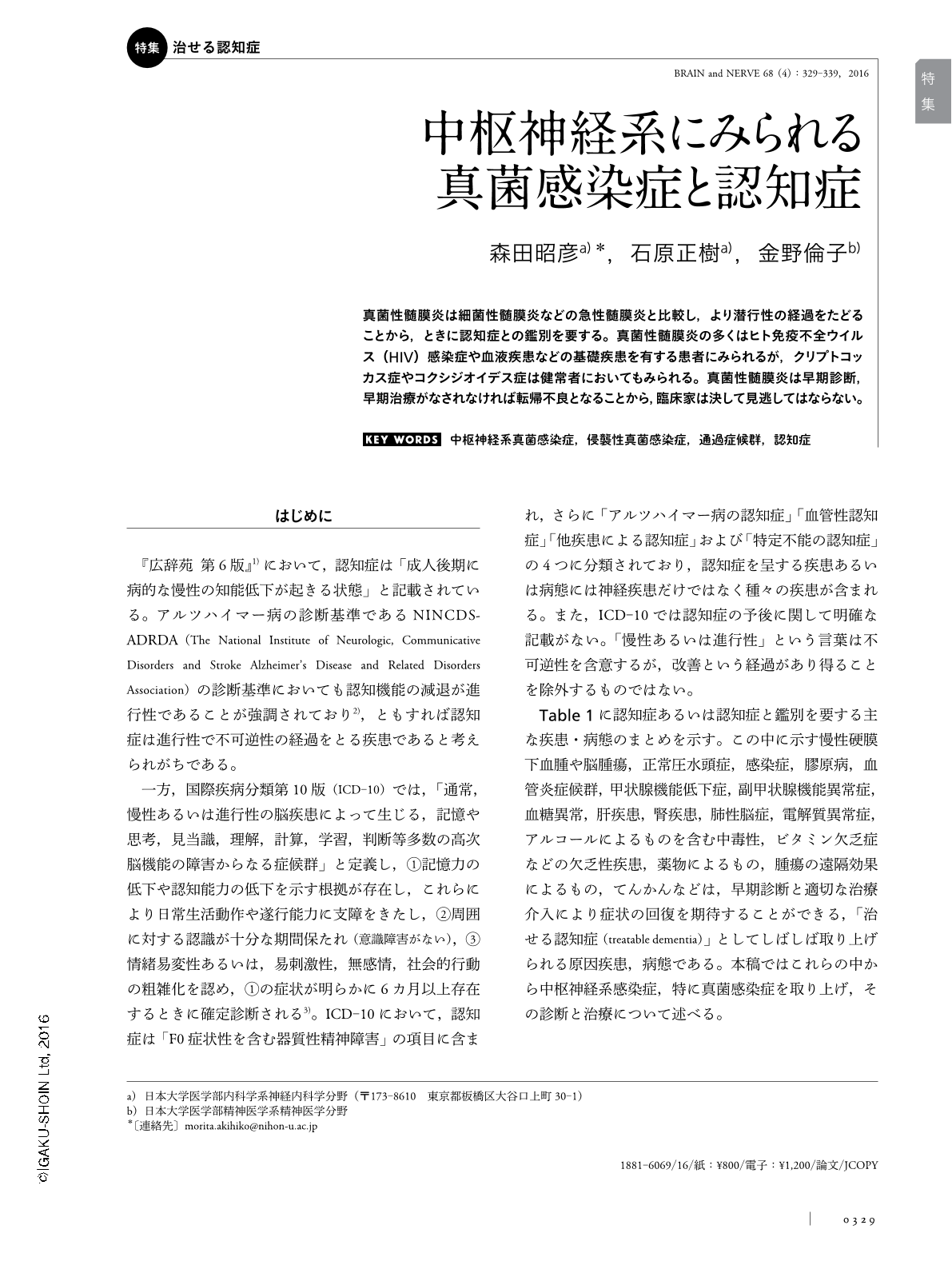Japanese
English
- 有料閲覧
- Abstract 文献概要
- 1ページ目 Look Inside
- 参考文献 Reference
真菌性髄膜炎は細菌性髄膜炎などの急性髄膜炎と比較し,より潜行性の経過をたどることから,ときに認知症との鑑別を要する。真菌性髄膜炎の多くはヒト免疫不全ウイルス(HIV)感染症や血液疾患などの基礎疾患を有する患者にみられるが,クリプトコッカス症やコクシジオイデス症は健常者においてもみられる。真菌性髄膜炎は早期診断,早期治療がなされなければ転帰不良となることから,臨床家は決して見逃してはならない。
Abstract
Central nervous system (CNS) mycosis is a potentially life-threatening but treatable neurological emergency. CNS mycoses progress slowly and are sometimes difficult to distinguish from dementia. Though most patients with CNS mycosis have an underlying disease, such as human immunodeficiency virus (HIV) infection, cancer, diabetes mellitus, and/or use of immunosuppressants, cryptococcosis can occur in non-immunosuppressed persons. One of the major difficulties in accurate diagnosis is to detect the pathogen in patients' cerebrospinal fluid (CSF) cultures. Thus, the clinical diagnosis is often made by combining circumstantial evidence, including mononuclear cell-dominant pleocytosis with low glucose and protein elevation in the CSF, as well as positive results from an antigen-based assay and a (1-3)-beta-D-glucan assay using plasma and/or CSF. Polymerase chain reaction (PCR)-based diagnostics, which are not performed as routine examinations and are mostly performed as part of academic research in Japan, are sensitive tools for the early diagnosis of CNS mycosis. Mognetic resonance imaging (MRI) is useful to assess the complications of fungal meningitis, such as abscess, infarction, and hydrocephalus. Clinicians should realize the advantages and disadvantages of these diagnostic tools. Early and accurate diagnosis, including identification of the particular fungal species, enables optimal antifungal treatment that produces good outcomes in patients with CNS mycosis.

Copyright © 2016, Igaku-Shoin Ltd. All rights reserved.


